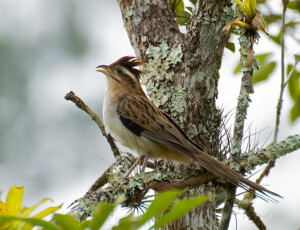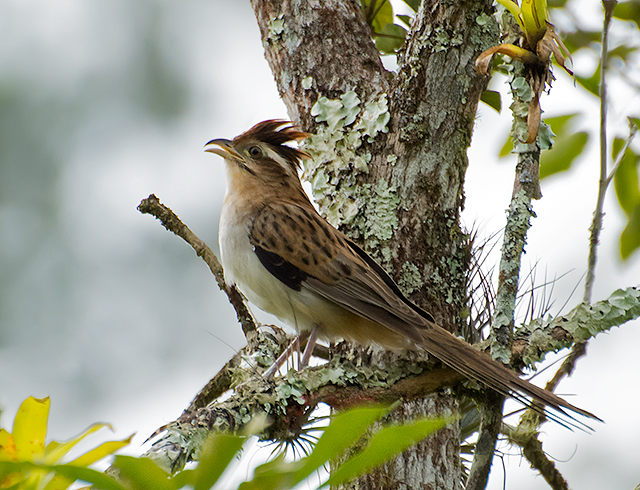
LINKED PAPER
Diel and seasonal variation of Striped Cuckoo (Tapera naevia) vocalizations revealed using automated signal recognition. Pérez‐Granados, C., & Schuchmann, K. L. 2023. IBIS. DOI: 10.1111/ibi.13129. VIEW
In the Brazilian Pantanal, you might encounter the calls of a Striped Cuckoo (Tapera naevia). Depending on the season and the time of day, this elusive bird species will produce either the two-syllable sem-fim song or the longer wee-series. This temporal variation suggests that these calls are used for different purposes. In a recent Ibis-study, Christian Pérez-Granados and Karl-Ludwig Schuchmann recorded the calls of Striped Cuckoo at three acoustic monitoring locations in the Pantanal. Detailed analyses across the complete annual cycle provided important insights into the putative functions of the sem-fim song and the wee-series.
Mate attraction
Between June 2015 and May 2016, the acoustic monitoring stations recorded 5295 sem-fim songs and 580 wee-series. Throughout the year, the sem-fim song was consistently detected between July and October and the wee-series was uttered most often in September and October. These seasonal patterns suggest that the sem-fim song plays a role in mate attraction. Female cuckoos might be sexually receptive for several months, so males will sing for long periods of time to attract as many females as possible (Payne 1973, Yoo et al. 2020). Moreover, the sem-fim song can often be heard at night, similar to certain songbird species that use nocturnal vocalisations to attract mates (La et al. 2012).

Figure 1. Spectrograms of a typical (a) sem-fim and (b) wee-series song of the Striped Cuckoo recorded in the Brazilian Pantanal.
Territorial defence
The shorter period of wee-series production points to territorial defence when the males arrive at their breeding grounds and compete for females (Riddiford 1986). This explanation is supported by previous studies showing that Striped Cuckoo males strongly respond to recordings of the wee-series and use this call in confrontations with neighbouring males (Smith & Smith 2000). In summary, the temporal patterns indicate that the sem-fim song is associated with mate attraction whereas the wee-series are related to territorial defence. However, direct observations and additional experiments are needed to confirm these conclusions.
References
La, V.T. (2012). Diurnal and nocturnal birds vocalize at night: a review. The Condor 114: 245–257. VIEW
Payne, R.B. (1973). Individual laying histories and the clutch size and numbers of eggs of parasitic cuckoos. The Condor 75: 414–438. VIEW
Riddiford, N. (1986). Why do cuckoos Cuculus canorus use so many species of hosts? Bird Study 33: 1–5. VIEW
Smith, W.J. & Smith, A.M. (2000). Information about behavior is provided by songs of the striped cuckoo. The Wilson Bulletin 112: 491–497. VIEW
Yoo, S., Kim, H.N., Lee, J.W. & Yoo, J.C. (2020). Seasonal and diurnal patterns of population vocal activity in avian brood parasites. Ibis 162: 1001–1011. VIEW
Image credits
Top right: Striped Cuckoo (Tapera naevia) | Dario Sanches | CC BY-SA 2.0 Wikimedia Commons
Blog posts express the views of the individual author(s) and not those of the BOU.
If you want to write about your research in #theBOUblog, then please see here





